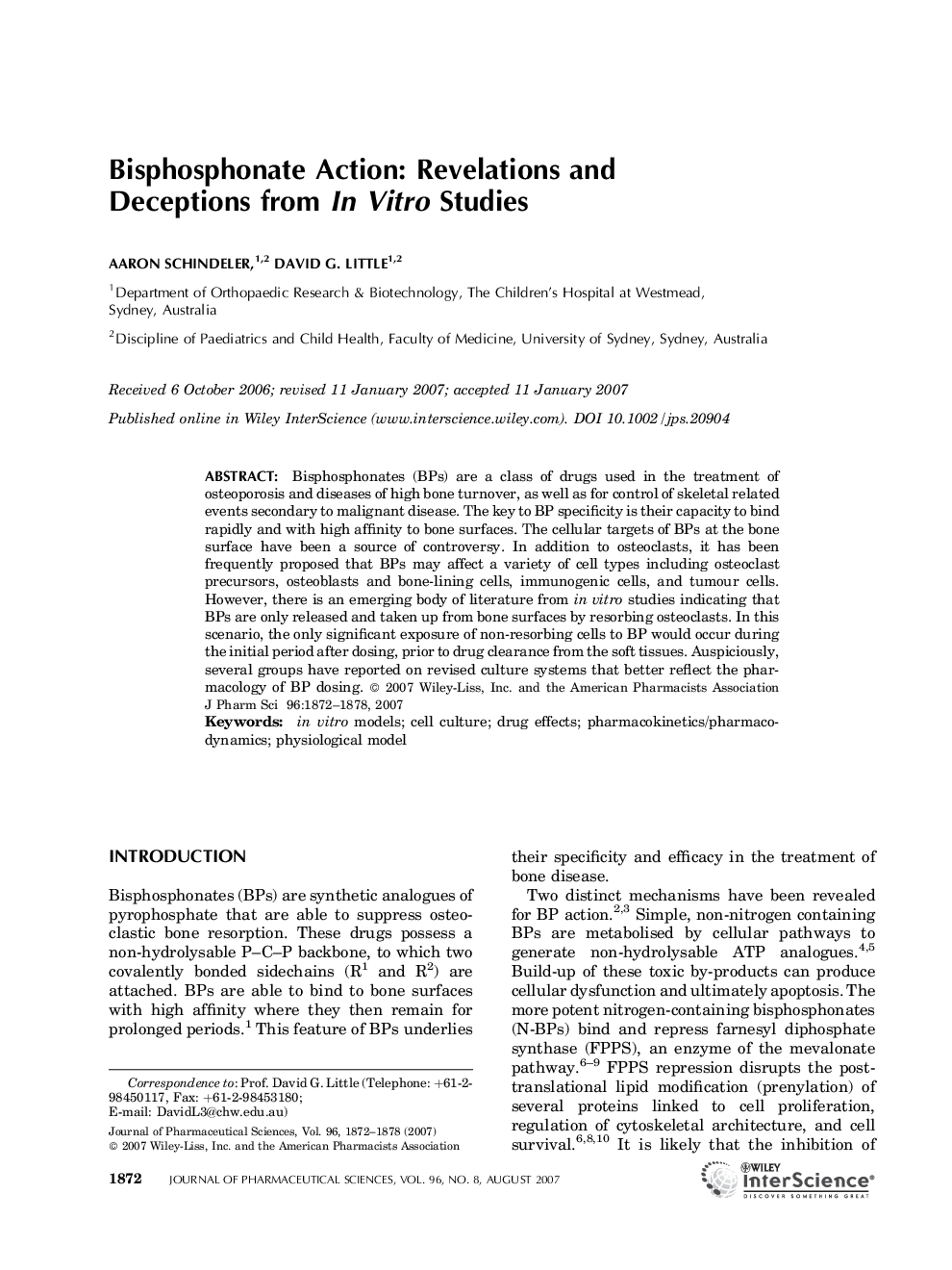| Article ID | Journal | Published Year | Pages | File Type |
|---|---|---|---|---|
| 2486102 | Journal of Pharmaceutical Sciences | 2007 | 7 Pages |
Abstract
Bisphosphonates (BPs) are a class of drugs used in the treatment of osteoporosis and diseases of high bone turnover, as well as for control of skeletal related events secondary to malignant disease. The key to BP specificity is their capacity to bind rapidly and with high affinity to bone surfaces. The cellular targets of BPs at the bone surface have been a source of controversy. In addition to osteoclasts, it has been frequently proposed that BPs may affect a variety of cell types including osteoclast precursors, osteoblasts and boneâlining cells, immunogenic cells, and tumour cells. However, there is an emerging body of literature from in vitro studies indicating that BPs are only released and taken up from bone surfaces by resorbing osteoclasts. In this scenario, the only significant exposure of nonâresorbing cells to BP would occur during the initial period after dosing, prior to drug clearance from the soft tissues. Auspiciously, several groups have reported on revised culture systems that better reflect the pharmacology of BP dosing. © 2007 WileyâLiss, Inc. and the American Pharmacists Association J Pharm Sci 96:1872-1878, 2007
Keywords
Related Topics
Health Sciences
Pharmacology, Toxicology and Pharmaceutical Science
Drug Discovery
Authors
Aaron Schindeler, David G. Little,
